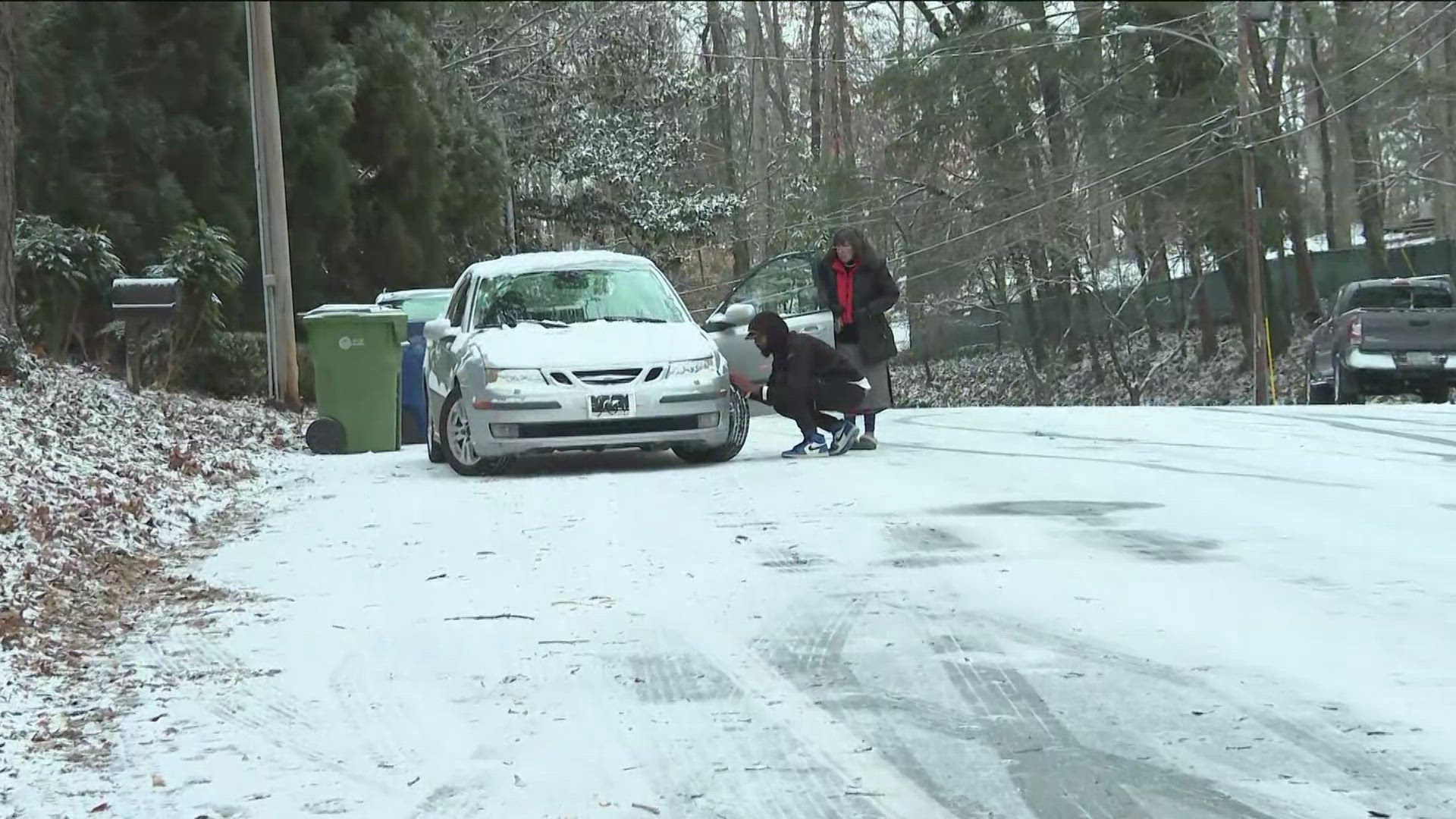
Atlanta, Georgia, known for its bustling streets and sprawling highway system, is a city where road conditions can significantly impact daily commutes, travel, and safety. Whether you’re a resident navigating city streets or a visitor passing through, understanding Atlanta’s road conditions is essential for smooth travel. In this article, we’ll cover everything you need to know about Atlanta road conditions, including how weather, traffic patterns, construction, and other factors influence driving in the city.
Understanding Atlanta’s Road Network
Atlanta is a major metropolitan area with one of the busiest road networks in the southeastern United States. Its complex system of highways and surface streets supports a large population and high traffic volumes, especially during peak hours. The city’s main roadways include:
- Interstate 285 (I-285): Known as the “Perimeter,” this beltway encircles the city and is a critical route for drivers. However, it’s notorious for heavy traffic, particularly during rush hours.
- Interstate 75 (I-75) & Interstate 85 (I-85): These highways run north to south through Atlanta, connecting the city to other major areas in Georgia and beyond.
- Interstate 20 (I-20): I-20 runs east to west, providing access to suburban areas as well as other parts of Georgia and neighboring states.
While these major highways offer efficient routes, Atlanta’s road conditions can fluctuate based on several factors. These include traffic congestion, weather conditions, roadwork, and accidents, all of which can impact how long it takes to travel from one part of the city to another.
Traffic Congestion in Atlanta

Atlanta is infamous for its traffic congestion, often ranked among the top cities in the U.S. with the worst traffic. The combination of a growing population, high numbers of commuters, and limited public transportation options contribute to traffic delays. Here are some key factors influencing traffic in Atlanta:
Peak Rush Hours
Like most major cities, Atlanta experiences peak rush hours that significantly affect road conditions. Typically, the busiest times on Atlanta’s roadways are:
- Morning Rush Hour (7:00 AM – 9:00 AM): Traffic on major highways like I-75, I-85, and I-285 is dense as commuters head into the city.
- Evening Rush Hour (4:30 PM – 6:30 PM): This period sees a reverse of the morning congestion, as workers leave the city and head toward suburban areas.
During these times, traffic on major thoroughfares slows to a crawl, with frequent bottlenecks and stop-and-go traffic. If possible, avoid traveling during peak hours to reduce the time spent on the road.
Commuter Population
Atlanta’s population swells during workdays, and many people rely on the city’s highway system to commute into downtown. This makes traffic patterns unpredictable and often leads to bottlenecks around key entry points into the city. Additionally, with the city’s limited public transportation options, many people drive, adding to congestion on local roads.
Weather and Its Impact on Atlanta Road Conditions

Atlanta’s weather plays a significant role in road conditions throughout the year. While Georgia’s climate is generally mild, winter and summer weather events can make driving in Atlanta tricky. Here’s how weather can impact your travel:
Winter Weather
Though Atlanta is not known for harsh winters, occasional snow, ice, and freezing rain can cause major disruptions. A small amount of snow or ice can lead to slick road conditions and accidents, as residents are not accustomed to driving in winter weather. It’s essential to stay informed about winter weather forecasts and be prepared for sudden changes in road conditions, especially in the colder months.
- Ice on Bridges and Overpasses: In winter, bridges and overpasses freeze faster than the rest of the road, making them especially dangerous.
- Reduced Visibility: Fog and heavy rain during winter storms can significantly reduce visibility, leading to slower traffic and higher chances of accidents.
Summer Weather
Summer brings heavy rainstorms to Atlanta, and flash flooding is not uncommon. Roads can become flooded during intense storms, especially in areas near rivers and low-lying regions. Drivers should exercise caution when weather warnings are in effect, as standing water can create hazards like hydroplaning.
- Flash Flooding: Low-lying areas, such as parts of I-285 and downtown Atlanta, are prone to flooding during heavy rains, causing road closures and traffic delays.
- Heat and Tire Safety: In the summer months, the high temperatures can cause tire blowouts, especially if tires are underinflated. Regular maintenance and monitoring tire pressure are key to safe driving.
Road Construction and Maintenance
Ongoing construction and road maintenance projects are another factor that can influence Atlanta’s road conditions. As one of the fastest-growing cities in the U.S., Atlanta sees frequent updates to its infrastructure. While these improvements aim to enhance traffic flow in the long term, they can cause significant delays and detours in the short term.
Major Construction Zones
Some of the most active construction zones in Atlanta include areas along I-285, I-75, and I-85. Roadwork projects on these busy highways often lead to lane closures, detours, and reduced speed limits. For instance:
- I-285 and I-75 Interchange: A major reconstruction project on the Perimeter has caused significant traffic disruptions.
- I-85 North of Downtown: Ongoing road improvements around the northern part of the city also impact travel time, especially during rush hours.
Road Closures and Detours
Construction zones often require road closures, leading to significant detours for drivers. Many navigation apps provide real-time updates on road conditions and suggested alternative routes. Always check for road closures and construction updates before heading out.
Accidents and Incidents
Accidents can happen at any time, but in Atlanta, they can be a significant cause of road delays. Due to high traffic volumes, collisions, especially during rush hours, can lead to major slowdowns, especially on major highways like I-75 and I-285.
Common Accident Hotspots
Certain areas in Atlanta are more prone to accidents due to high traffic volumes, complex interchanges, and poor weather conditions. These hotspots often include:
- I-285 and I-75 Interchange: One of the busiest intersections in the region, it frequently experiences accidents due to heavy traffic and frequent lane changes.
- Downtown Atlanta: The dense city layout, coupled with frequent roadwork, makes downtown Atlanta a common site for collisions.
Tips for Navigating Atlanta Road Conditions
To ensure a safe and efficient trip through Atlanta, keep these tips in mind:
- Plan Ahead: Use navigation apps like Google Maps or Waze to check real-time traffic conditions and find alternative routes.
- Avoid Peak Hours: If possible, schedule travel outside of rush hours to reduce time spent in traffic.
- Monitor Weather Conditions: Stay up-to-date on weather forecasts, especially in winter and summer months when road conditions can change rapidly.
- Stay Calm in Traffic: Be patient, as traffic can be frustrating. Stay calm and drive defensively, especially in high-congestion areas.
Frequently Asked Questions (FAQs)
1. What are the worst times to drive in Atlanta?
The worst times to drive in Atlanta are during the morning rush hour (7:00 AM – 9:00 AM) and evening rush hour (4:30 PM – 6:30 PM). These times see the most traffic congestion on major highways.
2. How does the weather affect Atlanta road conditions?
Winter weather, such as snow and ice, can make roads slippery, while summer storms often bring flooding and reduced visibility. Always check the weather before driving, especially in winter and during heavy rains.
3. What should I do if I encounter a road closure in Atlanta?
If you encounter a road closure, use real-time navigation apps like Google Maps or Waze to find alternative routes. Keep an eye on local news for updates on closures due to accidents or construction.
4. How can I avoid traffic in Atlanta?
Avoid traveling during rush hours if possible. Use navigation apps for up-to-date traffic conditions and explore alternative routes to bypass congested areas.
5. What are common accident hotspots in Atlanta?
Common accident hotspots include the I-285 and I-75 interchange, as well as downtown Atlanta, where heavy traffic and complex road layouts often lead to collisions.
Conclusion
Navigating Atlanta’s road conditions requires patience, preparation, and awareness. From traffic congestion and construction zones to the unpredictable weather and occasional accidents, several factors can influence driving in this bustling city. By staying informed about current conditions, planning ahead, and following safety tips, drivers can reduce stress and improve their travel experience in Atlanta.
Whether you’re commuting to work or exploring the city as a visitor, understanding the road conditions and adjusting your travel plans accordingly will help you navigate Atlanta’s busy streets with confidence and safety.








